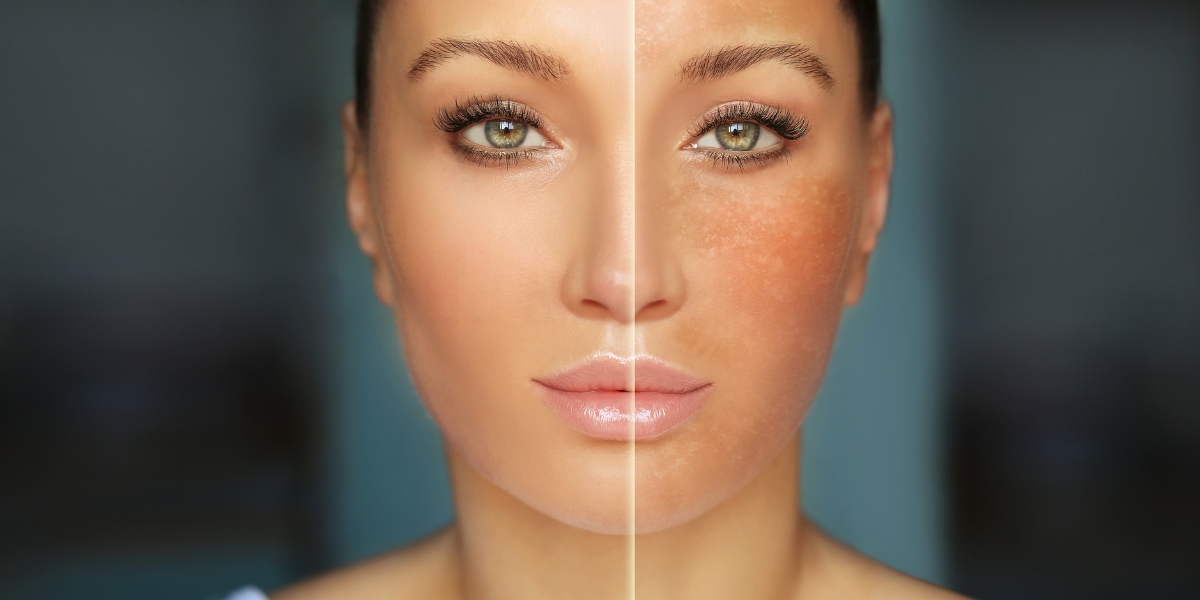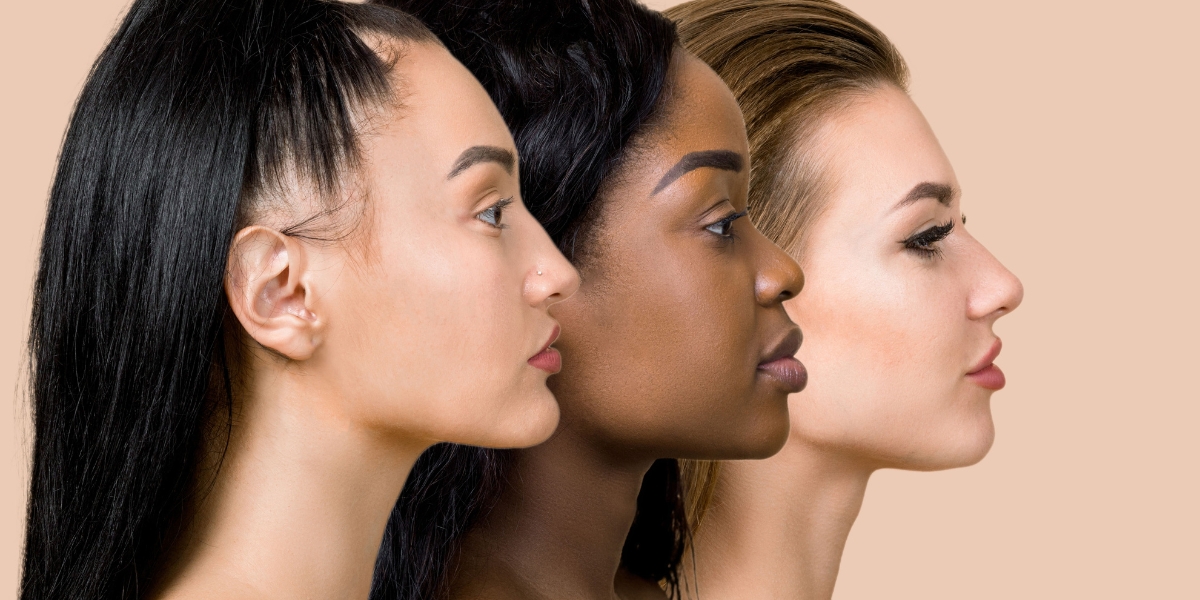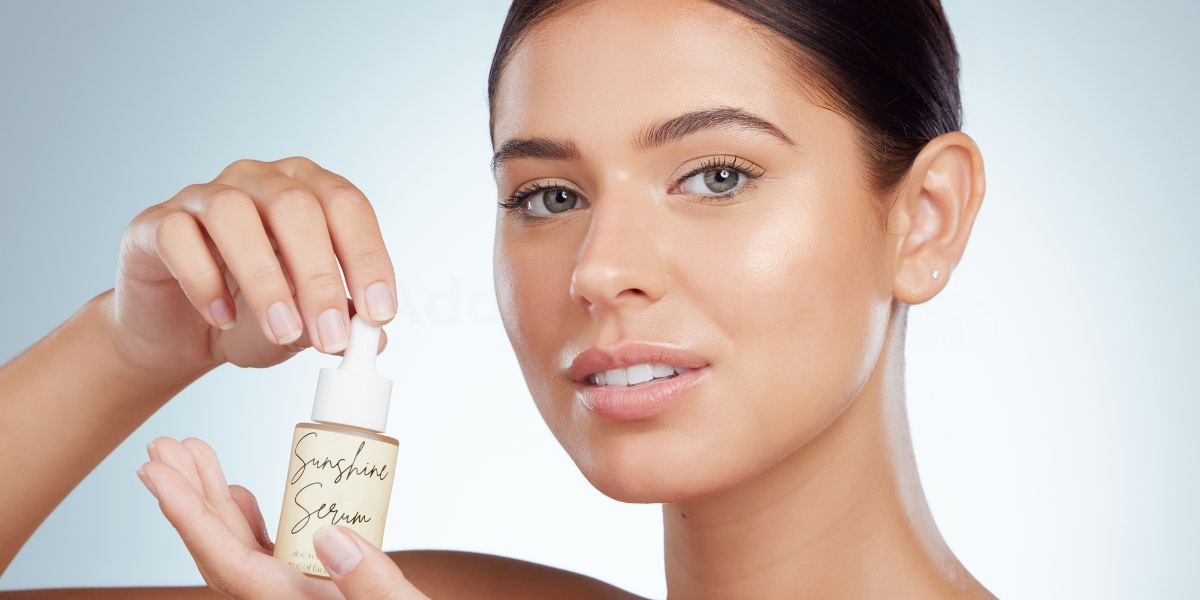Blog
How to Reduce Melanin in Face Naturally for Even Skin Tone

How to Reduce Melanin:
Many people around the world wish to have flawless skin. One key factor that can affect the appearance of the skin is melanin. This pigment is accountable for the color of our skin, hair and eyes. While melanin is essential for protecting our skin from harmful UV rays, excessive amounts can lead to various skin concerns, such as hyperpigmentation and uneven skin tone. To maintain an even and radiant complexion, incorporating a consistent skincare routine is crucial. For tips on an effective morning routine that enhances radiance, check out our Essential Steps for a Radiant Skin Morning Routine.
What is Melanin?
Before discussing how to reduce melanin, it is essential to understand what melanin is and its role in our bodies. Melanin pigment is produced by specialized cells called melanocytes situated in the epidermis’s bottom layer. It comes in three primary forms: eumelanin, pheomelanin, and neuromelanin. Eumelanin is responsible for darker skin tones, while pheomelanin gives rise to lighter skin tones. On the other hand, neuromelanin is present in specific brain regions.
Melanin serves as a natural defense mechanism against the harmful effects of UV radiation. When exposed to sunlight, melanocytes produce more melanin to protect the skin from potential DNA damage. However, an overproduction of melanin can result in dark spots, melasma, freckles, and an uneven skin tone. If you’re concerned about dark spots, check out our article on How to Remove Black Spots on Face.
What Causes Increased Melanin Levels?
Several factors can contribute to increased melanin production or hyperpigmentation in the skin, including:
1. Sun exposure:
The primary causative factor is sunlight exposure. When the skin is exposed to continuous UV rays, the melanocytes go into overdrive to produce more melanin, leading to a tan. However, excessive sun exposure can cause an uneven distribution of melanin, forming dark spots and hyperpigmentation.
2. Hormonal fluctuations:
Hormonal changes can also influence melanin production. Pregnant women often experience increased melanin production, leading to the development of a condition called melasma. This condition causes dark patches to appear on our face, particularly on the cheeks, upper lip, and forehead.
3. Genetics:
The genetic makeup of some individuals makes them more susceptible to hyperpigmentation or darker skin tones.
4. Injury:
Skin injury and inflammation, such as acne, eczema, psoriasis, or chemical exposure, can lead to hyperpigmentation as part of the healing process.
5. Medications:
Certain medicines, such as hormone replacement therapy or birth control pills, can also increase melanin levels.
6. Irritation:
Excessive friction or rubbing of the skin, such as from clothing, can activate melanocytes and result in hyperpigmentation. This irritation hyperpigmentation is also known as frictional melanosis or frictional hyperpigmentation.
7. Age:
Hyperpigmentation caused by aging may appear as age spots or liver spots as melanocytes become more active.
8. Nutritional insufficiencies:
Mineral and vitamin deficiencies, such as vitamin B12 or folic acid, can affect melanin production and skin pigmentation.
Topical skin care ingredients that help reduce melanin in skin
When exploring how to reduce melanin in face, consider integrating both topical treatments featuring these key ingredients with the following tips:
1. Glycolic acid:
It works by breaking down the bonds between dead skin cells on the surface, facilitating their removal.
This process, known as desquamation, is crucial in reducing hyperpigmentation as the outermost layer of skin often contains excess melanin.
By accelerating the shedding of pigmented cells, Glycolic Acid gradually reveals newer, less pigmented skin beneath, promoting a more even skin tone over time.
2. Niacinamide:
This versatile ingredient is effective in reducing the transfer of melanin to the skin’s surface.
By interfering with the process of melanin distribution, Niacinamide helps to even out skin tone and diminish hyperpigmentation, contributing to a more uniform complexion.
3. Vitamin C:
As a potent antioxidant, Vitamin C not only helps to inhibit tyrosinase but also promotes collagen production. For more on its benefits, check out our article on Benefits of Vitamin C.
This dual action reduces pigmentation and brightens the skin, and improves skin firmness.
4. Retinol:
Known for its ability to enhance cell turnover, Retinol accelerates the shedding of pigmented skin cells and promotes the growth of fresh, lighter skin underneath.
This helps to reduce the appearance of dark spots and uneven pigmentation.
5. Kojic Acid:
Derived from fungi, Kojic Acid is known for its skin-brightening properties. It inhibits tyrosinase, the enzyme responsible for melanin production, thereby reducing pigmentation and fading dark spots.
Kojic Acid is widely used in skin care products to treat conditions like hyperpigmentation and melasma.
6. Azelaic Acid:
Found naturally in grains like barley and wheat, Azelaic Acid works to inhibit tyrosinase, reducing abnormal melanin production.
It is especially effective for treating hyperpigmentation and post-inflammatory pigmentation caused by acne or other skin conditions.
7. Alpha Arbutin:
A naturally occurring derivative of hydroquinone, Alpha Arbutin works by inhibiting tyrosinase activity, which leads to a reduction in melanin synthesis.
It is considered a safer alternative to hydroquinone and is commonly used to treat dark spots, age spots, and overall uneven skin tone.
8. Licorice Extract:
Known for its anti-inflammatory and brightening properties, Licorice contains glabridin, a compound that inhibits tyrosinase activity.
This helps reduce melanin production and soothes the skin, making it suitable for sensitive skin types.
How to Reduce Melanin Naturally in Skin?
Reducing melanin in the skin can be achieved through various methods, ranging from home remedies to professional treatments. It is important to note that eliminating melanin is not possible, as it is a natural pigment that plays a crucial role in protecting our skin. However, following specific practices, you can achieve a more even skin tone and diminish hyperpigmentation. The following are some effective ways to reduce melanin in the skin:
Home remedies to reduce melanin:
1. Lemon juice:
Lemon extract is known for its natural skin-lightening properties. Though lemon is considered to be very natural, the citric acid can sometimes be very irritating on particularly atopic skin types and dry skin types. Never directly apply it on the skin as it can be very harsh on certain skin types.
It is suggested to take lemon water orally as it helps to provide a good amount of Vitamin C and promotes skin lightening. Apply a thin layer of freshly squeezed lemon juice on the affected areas and leave it on for 15-20 minutes before rinsing off with water. However, it is essential to note that lemon extract can cause skin inflammation in some people, so you should perform a patch test beforehand.
2. Aloe Vera:
Aloe Vera gel is soothing for the skin and contains compounds that can inhibit melanin production. Apply a thin layer of aloe Vera gel to the skin and leave it on for 30 minutes before rinsing off. Regular use can help reduce hyperpigmentation and promote a more even complexion.
3. Turmeric:
Turmeric has been used for centuries in traditional medicine for its skin-brightening properties. Mix a spoonful of turmeric powder with milk or honey, create a smooth paste, and apply it to the skin. Leave it on for 20-30 minutes before rinsing off. Regular use can help reduce melanin production and improve the skin’s overall appearance.
Dietary and vitamin-rich solutions:
When addressing how to reduce melanin naturally, consider integrating the following dietary and vitamin-rich elements that can naturally work towards reducing melanin levels and achieving a balanced skin tone.
a. Foods rich in antioxidants
Antioxidants play a crucial role in neutralizing free radicals, which are unstable molecules that can damage skin cells and stimulate melanin production.
Key foods to consider:
1. Citrus Fruits:
Oranges, lemons, and grapefruits are rich in vitamin C, an antioxidant that helps reduce melanin and brighten the skin.
2. Berries:
Blueberries, strawberries, and raspberries are loaded with antioxidants that protect the skin from oxidative stress and reduce pigmentation.
3. Nuts:
Almonds and walnuts provide vitamin E, which supports skin health and inhibits melanin production.
4. Green Leafy Vegetables:
Spinach, kale, and broccoli are packed with vitamins and antioxidants that limit melanin stimulation and improve skin health.
b. Lycopene-Rich Foods:
Lycopene is a natural antioxidant found in certain fruits and vegetables that can help reduce melanin naturally and protect the skin from UV damage.
Foods high in lycopene include:
1. Tomatoes:
Tomatoes and tomato-based products are excellent sources of lycopene.
2. Watermelon:
This refreshing fruit is another great source of lycopene, which helps minimize melanin concentration and protects the skin from environmental stressors.
c. Soy Products:
Soy contains isoflavones, plant compounds that can help reduce melanin production and improve skin tone. Adding soy products to your diet, such as tofu, soy milk and edamame, minimize melanin pigment transfer promoting skin lightening and a more even complexion.
Vitamins and Supplements
Vitamins and supplements offer a range of benefits from neutralizing free radicals to inhibiting enzymes involved in melanin synthesis.
For a natural approach to how to reduce melanin in skin, focus on incorporating specific vitamins and supplements into your routine that help lighten pigmentation and enhance skin tone.
Listed below are essential nutrients and how they help to reduce melanin naturally:
Glutathione:
It is a powerful antioxidant that plays a role in inhibiting melanin synthesis. Glutathione shifts the production of melanin from darker eumelanin to lighter pheomelanin, resulting in a lighter skin tone.
Glutathione also reduces oxidative stress by neutralizing free radicals, which can otherwise stimulate increased melanin production as a protective response. It helps impart a lighter skin tone and improved complexion.
Zinc PCA:
It helps in balancing melanin levels by acting as a cofactor for enzymes involved in DNA repair and skin regeneration, which is vital for maintaining healthy skin.
It also supports wound healing and promotes cell turnover, aiding the skin in shedding damaged, pigmented cells.
Vitamin E:
Vitamin E protects the skin from oxidative stress caused by free radicals. This protection helps to prevent an increase in melanin production.
Vitamin E supplements and topical products can help maintain healthy, evenly-toned skin by reducing the impact of environmental stressors.
Conclusion
Reducing melanin in the skin is a common goal for those seeking a more even complexion and a reduction in hyperpigmentation. While complete elimination of melanin is not possible, various methods can help achieve a more balanced and flawless appearance. From simple home remedies like lemon juice and aloe vera to professional treatments like laser therapy and topical creams, everyone has options. It is important to remember that maintaining a consistent skincare routine and sun protection is key to achieving and maintaining the desired results. Consultation with a dermatologist can provide tailored guidance and treatment modalities based on individual needs and concerns. Embrace your skin’s natural beauty and take steps towards reducing melanin for flawless skin.


